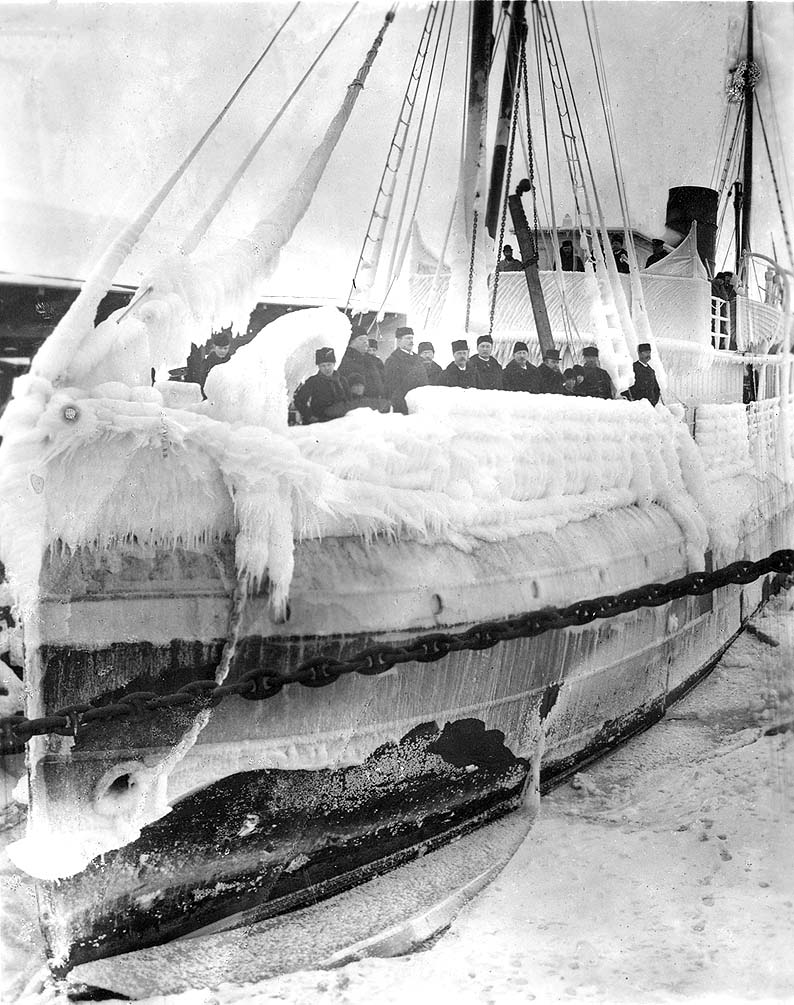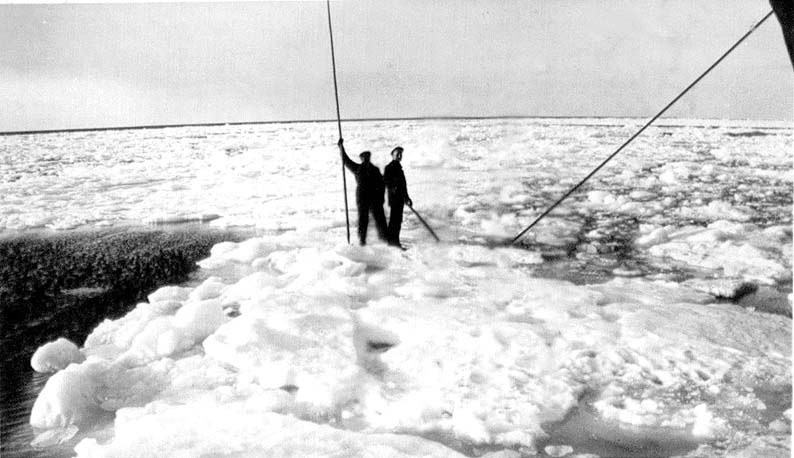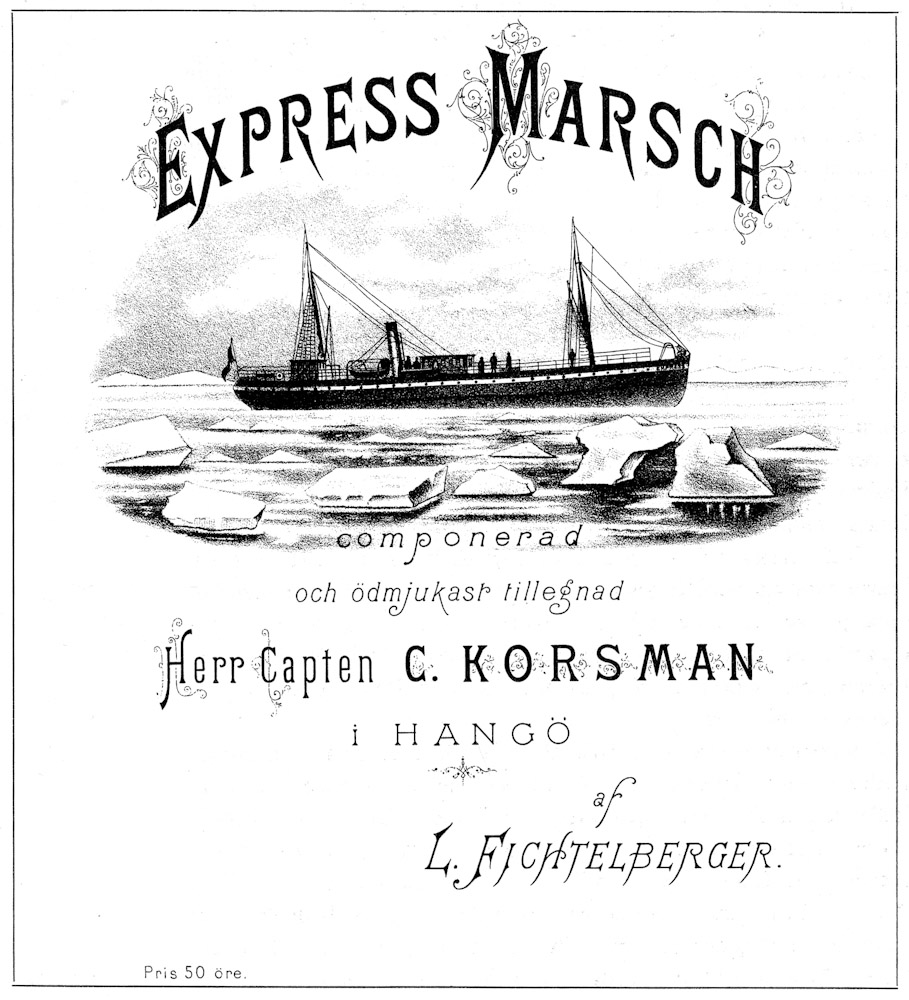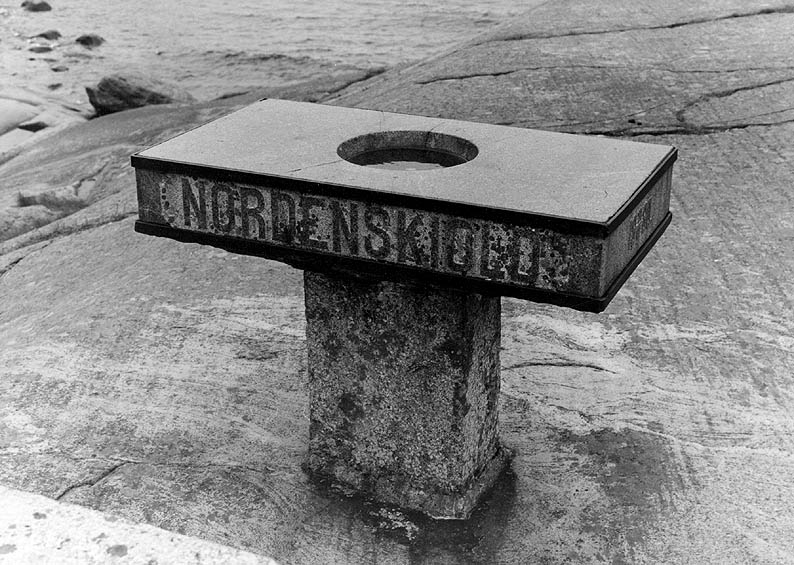
The steamship Express has a legendary place in Finnish history. The Express was built at Oskarshamn Shipyard in Sweden in 1877, and the ship was ordered by the Finnish company Finska Transito Ångbåts. It was 42.4 m long, 6.9 m wide and 3.5 m deep, with a top speed of 10.7 knots on a 400-horsepower engine. In open water, the journey from Hanko to Stockholm took 17 hours.

Express rakennettiin Oskarshamnin telakalla Ruotsissa vuonna 1877, laivan tilasi hankolainen Finska Transito Ångbåts -osakeyhtiö. Pituutta sillä oli 42,4 m, leveyttä 6,9 m ja syväystä 3,5 m, huippunopeus 400 hevosvoiman moottorilla oli 10,7 solmua. Avovedessä matka Hangosta Tukholmaan kesti 17 tuntia.
Historian lehti kääntyi, kun Express alkoi liikennöidä Hangon ja Tukholman välillä joulukuussa 1877. Expressin keula pystyi leikkaamaan 12 cm:n paksuista jäätä. Se kuljetti mukanaan postia, voita ja matkustajia. Ensimmäisen luokan hyttejä oli alkuun 8, ja ahterin puolipyöreään yhteistilaan voitiin majoittaa 10–12 matkustajaa. Liki 20 vuoden ajan Expressin aikataulu pysyi samana: lähdöt olivat Hangosta lauantaisin, Tukholmasta keskiviikkoisin.
Valtio tuki tuntuvasti Expressin liikennöintiä, mutta jo vuonna 1879 varustamo ajautui konkurssiin. Kesäisin linja ei kannattanut, koska yhteydet Helsingistä ja Turusta Tukholmaan olivat käytännöllisemmät. Uusi omistaja, laivanvarustaja Korsman panosti talviliikenteeseen.
Korsman oli myös Hangon kylpylän toimitusjohtaja, joka osasi hyödyntää Suomelle niin tärkeän Express-laivan nauttimaa julkisuutta. Kylpylän kapellimestari Fichtelberger sävelsi sen kunniaksi Express-marssin.
Kun tutkimusmatkailija Nordenskiöldin oli määrä matkustaa Tukholmasta Pietariin kertomaan luoteisväylästä Venäjän tsaarille, matka joutui tietenkin Expressillä Hangon kautta. Neuvokas Korsman teetti Kuningattarenvuorelle graniittisen pöydän, josta Nordenskiöldille tarjottiin höyryävää boolia. Kohtalon oikusta pöytään kaiverrettiin väärä päivämäärä, koska talvimyrsky viivästytti Expressin matkaa seuraavan vuorokauden puolelle. Uudenvuoden yönä 1881 satamassa odotti hurraava kansanjoukko. Nykyään Nordenskiöldin pöytä on Kasinon edustan kalliolla.
Hangon Express jätti vuonna 1898. Neljä vuotta aiemmin se oli siirtynyt Suomen Höyrylaiva Osakeyhtiön haltuun. Palveltuaan muutaman kesän linjoilla Helsinki–Tukholma ja Turku–Tukholma Express varustettiin rahtilaivaksi Suomen ja Riikan välille. Vuonna 1901 se myytiin Arkangeliin rouva Tatiana Kukoverovalle, jolloin matkustajapaikkoja lisättiin. Kolme vuotta myöhemmin Express päätyi Venäjän valtion haltuun ja sai nimekseen Solombola, Arkangelin lähellä sijaitsevan saaren mukaan. Alus romutettiin vuonna 1930.
Photos: Hanko museum.
Lähteet: Henrik Ramsay: Purjehtijan muistelmat, suom. Martti Jukola ja J. W. Rangell, WSOY 1947. Alftan, Liewendahl, Barck: Sexornas Jakt, Finlands 6 mR -förbund d.f. 1992. Erkki Maasalo: Sir Henrik saa tehtävän, Fenix-kustannus Oy, 2004.

This story has been produced with the support of the Svenska Kulturfonden.




